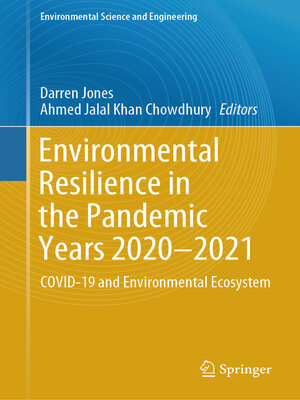Environmental Resilience in the Pandemic Years 2020–2021
ebook ∣ COVID-19 and Environmental Ecosystem · Environmental Science and Engineering
By Darren Jones

Sign up to save your library
With an OverDrive account, you can save your favorite libraries for at-a-glance information about availability. Find out more about OverDrive accounts.
Find this title in Libby, the library reading app by OverDrive.



Search for a digital library with this title
Title found at these libraries:
| Library Name | Distance |
|---|---|
| Loading... |
This book focuses on the indirect effects on environmental resilience. The COVID-19 epidemic and the 2020 global pandemic have had an unprecedented public health impact. These included not only economic impacts but also social activities, and environmental and ecological impacts. This study examined the fact that net effects were positive, for example, in terms of greenhouse gas emissions, oil and gas exploration activities, and reductions in pollution. The most notable and most positive environmental impact of COVID-19 is the reduction of greenhouse gas emissions from transportation sources. Air and road transport cause a huge portion of the pollution from closures and outages. Restrictions on economic and social mobility have had positive impacts, with reductions in transport and trade contributing significantly to reducing greenhouse gas emissions. By increasing their scale, endangered ecosystems benefit from improved environmental quality.
To better understand how the environment is maintained, we summarize the evolution of COVID-19 and subsequent pandemics. The COVID-19 pandemic has had an unexpected and lasting impact on the environment. At the same time, ecological hotspots where human activity is commonly prevalent benefit from improved environmental quality, allowing wildlife and other life forms to thrive. For this reason, we can conclude that the COVID-19 outbreak and subsequent pandemic were beneficial to environmental stewardship.







